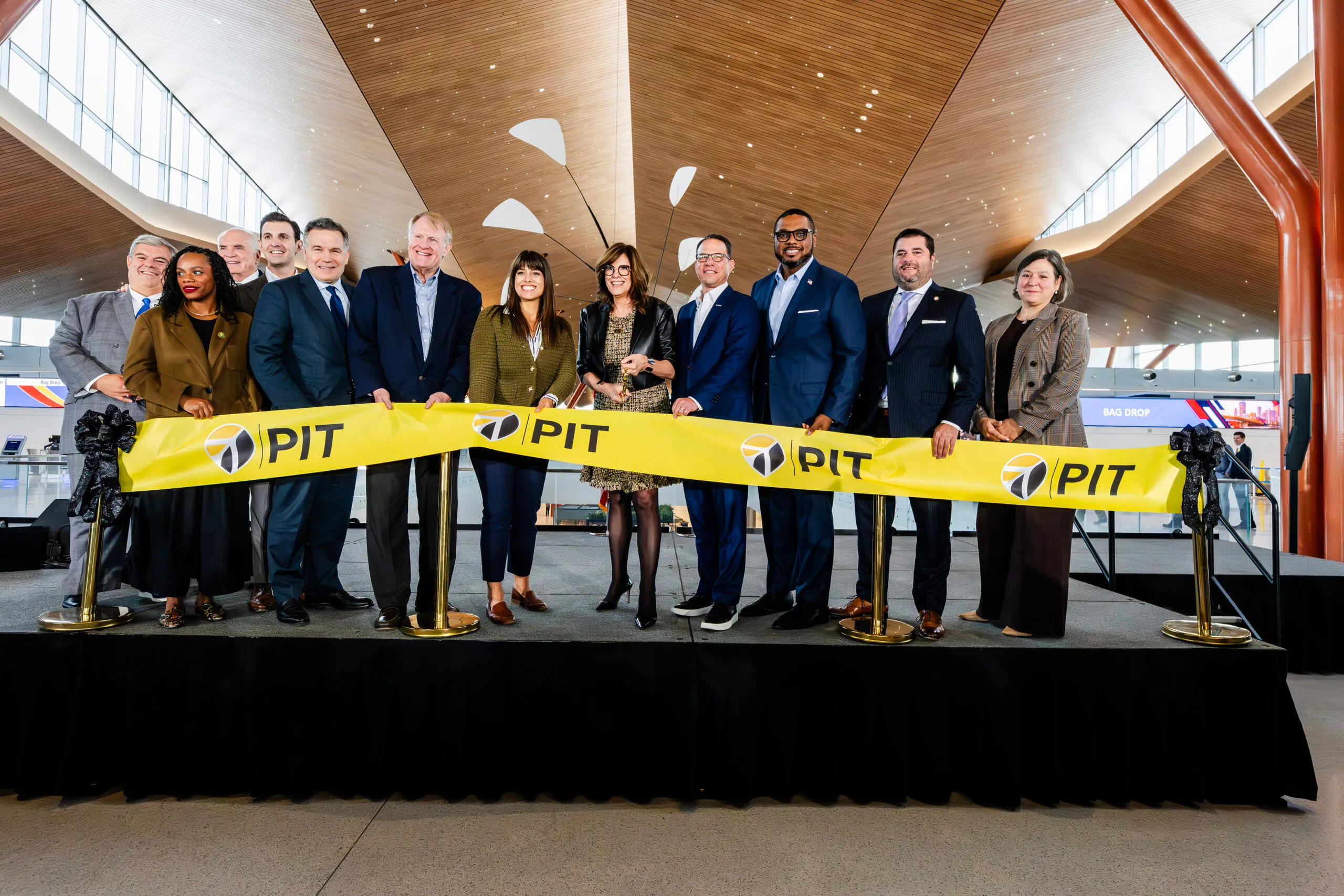PITTSBURGH — On October 11, 2025, Pittsburgh International Airport (PIT) officially cut the ribbon on its much-anticipated new terminal, marking a significant transition in the airport’s identity and operations.
Over 300 guests from airlines, local government, labor, and community organizations gathered for the ceremony held at 9:30 a.m., which then gave way to a Community Open House that attracted more than 10,000 registered visitors.
Financing & Project Background
Construction began in 2021 after years of planning and debate. The total cost of the project has escalated to US$1.7 billion, from earlier estimates closer to US$1.1 billion. The airport’s airline partners are carrying the lion’s share of the financing, and no taxpayer dollars were used in construction.
This new terminal is central to PIT’s shift from being primarily a hub to becoming an origin & destination (O&D) airport. Over the past decade, PIT has expanded its network from 36 nonstop destinations to 61, and increased its airline count from 7 to 15.
Design & Passenger Experience
The new terminal occupies approximately 811,000 square feet and is sited adjacent to the existing airside concourse, eliminating the need for long connector trains or tunnels between landside and airside. The former two-terminal layout with trams is being retired — the tram system is expected to be decommissioned.
The design is rich with local symbolism:
- The roofline rises and falls, echoing Pittsburgh’s rolling hills.
- Tree-like structural columns and leaf-pattern terrazzo floors (by artist Clayton Merrell) evoke the region’s forests.
- Inside, a constellation lighting fixture (over 4,000 lights) is intended to suggest a night sky in the public spaces.
- The distances passengers and baggage have to travel are reduced, improving efficiency.
Gate count is being rationalized—from 75 down to about 63 gates—to match current traffic levels better.
Retail, dining, and amenities are modernized: the terminal will host more than a dozen new shops and restaurants, including local names such as Mineo’s and Café Conmigo.
Ceremonial Remarks
Several high-level officials delivered remarks at the ribbon cutting:
- Josh Shapiro, Governor of Pennsylvania, spoke of the terminal as a “beautiful gateway” to Western Pennsylvania.
- Sara Innamorato, Allegheny County Executive, emphasized that the terminal is “our region’s front door.”
- Others praised the collaborative effort among public, private, and labor partners to bring this long-gestating project to life.
The Open House allowed visitors to walk through check-in, the atrium, security, and arrivals, giving them the chance to get an early feel for the new layout.
Trials, Next Steps & Challenges
Before full commercial operations begin, the airport has staged and will stage more public trial runs. The first trial involved 300 volunteers; a second one involving 2,500 participants is planned.
The terminal is expected to open to the public sometime in fall 2025; some sources suggest ahead of Thanksgiving.
Post-opening, the existing landside terminal is slated for demolition or repurposing, while upgrades will proceed on parts of the airside concourse. Some challenges to watch:
- Smooth switchover—moving operations, airlines, and staff to the new terminal without service disruptions.
- Maintaining passenger satisfaction in the early weeks—first impressions matter.
- Adapting infrastructure and systems (security, baggage, utilities) to new flows.
- Fiscal discipline—the cost overruns (US$ 1.7 billion vs. earlier US$ 1.1 billion) already hint at pressure.
Why This Matters
PIT has long sought an airport better suited to its current scale and ambitions. After the decline of its hub operations (once a major US Airways hub), the airport has adapted to a more modest but stable traffic base—just under 10 million passengers in 2024.
In many ways, the new terminal represents both a symbolic and physical reset. It reflects Pittsburgh’s intent to move forward with an airport built for its own needs, one that serves the community, celebrates local identity, and supports future growth in connectivity, cargo, innovation, and economic strength.
Stay tuned to Airways and follow us on LinkedIn and Instagram for the latest updates.



.webp)
